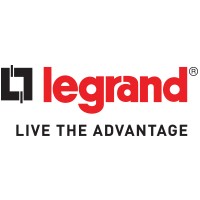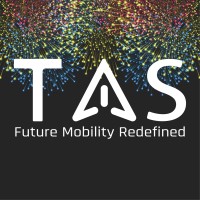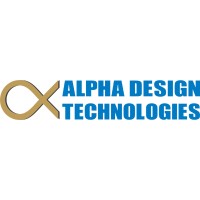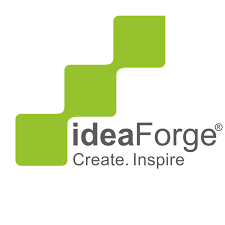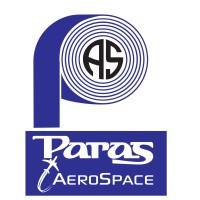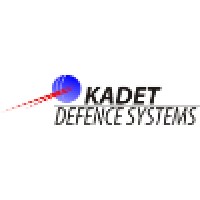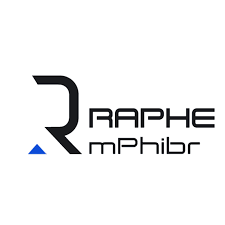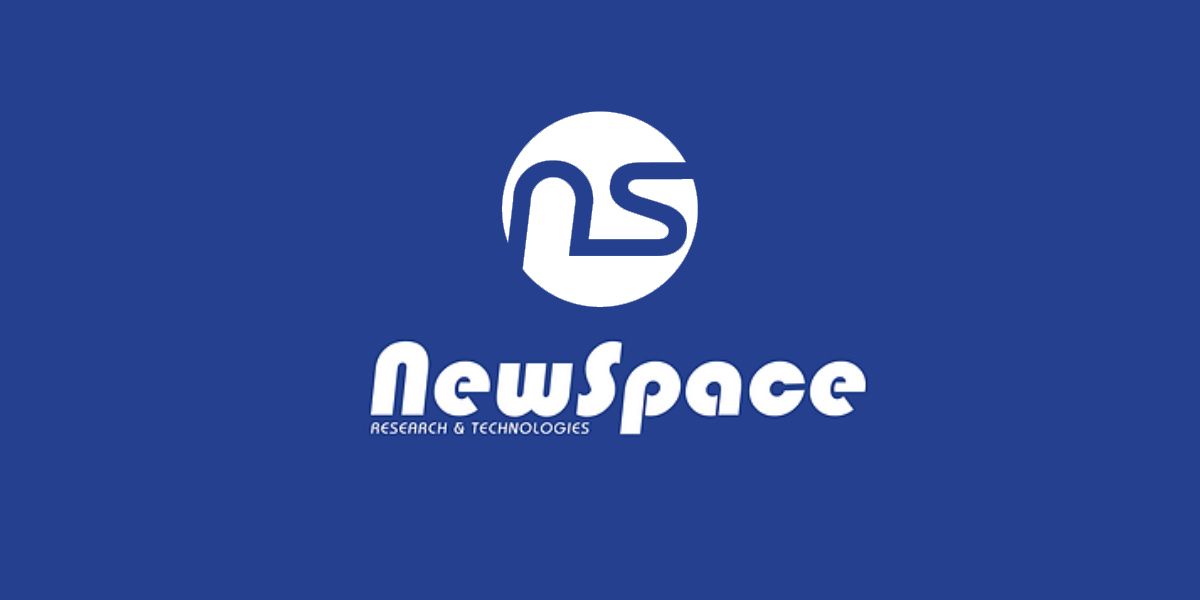ELE Times
Top 10 Stealth Fighter Jets in the World
Stealth fighter jets represent the pinnacle of modern military aviation, integrating advanced materials, aerodynamics, and electronic warfare capabilities to reduce their radar and infrared signatures. Below are the top 10 stealth fighter jets in the world, ranked based on their technology, combat effectiveness, and operational capabilities.
1. Lockheed Martin F-22 Raptor (USA)
The Lockheed Martin F-22 Raptor is a fifth-generation air superiority stealth fighter designed for unmatched dominance in aerial combat. Powered by twin Pratt & Whitney F119-PW-100 engines with thrust vectoring, it offers extreme maneuverability and supercruise capability at Mach 2.25. Its AN/APG-77 AESA radar provides superior situational awareness, while stealth technology minimizes radar cross-section (RCS). The F-22 carries AIM-120 AMRAAM and AIM-9X Sidewinder missiles in internal bays for reduced detectability. With integrated electronic warfare and sensor fusion, the F-22 excels in beyond-visual-range engagements, making it the most advanced operational fighter in the world.
2. Lockheed Martin F-35 Lightning II (USA)
The Lockheed Martin F-35 Lightning II is a state-of-the-art, multirole fifth-generation stealth fighter designed for air superiority, ground attack, and electronic warfare. Developed under the Joint Strike Fighter (JSF) program, it comes in three variants: F-35A (conventional takeoff), F-35B (short takeoff/vertical landing – STOVL), and F-35C (carrier-based operations). Equipped with an AN/APG-81 AESA radar, Distributed Aperture System (DAS) for 360-degree situational awareness, and sensor fusion capabilities, the F-35 provides unmatched battlefield connectivity. Its Pratt & Whitney F135 engine enables Mach 1.6 speed, while stealth coatings reduce radar detection, making it one of the most advanced fighters in service today.
3. Sukhoi Su-57 Felon (Russia)
The Sukhoi Su-57 Felon is Russia’s first fifth-generation stealth multirole fighter, designed to excel in air superiority and strike missions. Developed by Sukhoi for the Russian Air Force, it incorporates stealth technology, supercruise capability, and advanced avionics. The Su-57 is powered by twin Saturn AL-41F1 engines, with future upgrades expected to include the more powerful Izdeliye 30 engines for enhanced thrust and fuel efficiency. Equipped with the N036 Byelka AESA radar and L-band wing-mounted radars, it boasts superior detection capabilities. With internal weapons bays for reduced radar cross-section (RCS), the Su-57 is Russia’s answer to Western fifth-generation fighters like the F-22 and F-35.
4. Chengdu J-20 Mighty Dragon (China)
The Chengdu J-20 Mighty Dragon is China’s premier fifth-generation stealth fighter, developed by Chengdu Aerospace Corporation for the People’s Liberation Army Air Force (PLAAF). Designed for air superiority and deep-strike missions, it features stealth shaping, canard-delta wing configuration, and diverterless supersonic inlets (DSI) to minimize radar cross-section (RCS). The J-20 is currently powered by WS-10C engines, with future integration of WS-15 engines for improved supercruise. It is equipped with an AESA radar, advanced electronic warfare systems, and long-range PL-15 BVRAAMs. As China’s most advanced fighter, the J-20 enhances Beijing’s strategic reach and challenges Western air dominance.
5. Shenyang FC-31 Gyrfalcon (China)
The Shenyang FC-31 Gyrfalcon is China’s second fifth-generation stealth fighter, developed by Shenyang Aircraft Corporation primarily for export and potential naval carrier operations. Featuring stealth-optimized aerodynamics, twin WS-19 engines, and an AESA radar, the FC-31 is designed for multirole combat, including air superiority and precision strikes. Its internal weapons bay reduces radar cross-section (RCS), while advanced sensor fusion enhances situational awareness. The FC-31 is often compared to the F-35, offering a cost-effective alternative for international buyers. With ongoing improvements, it may become a key component of China’s future carrier-based fighter fleet for the PLAN (People’s Liberation Army Navy).
6. KAI KF-21 Boramae (South Korea)
The KAI KF-21 Boramae is South Korea’s next-generation 4.5-generation multirole fighter, developed by Korea Aerospace Industries (KAI) in partnership with Indonesia. Designed for air superiority and strike missions, it features stealth-optimized shaping, an AESA radar, and advanced avionics. Powered by twin General Electric F414-GE-400K engines, the KF-21 achieves Mach 1.8 with enhanced maneuverability. It integrates beyond-visual-range (BVR) missiles, including MBDA Meteor and AIM-120 AMRAAM, with plans for future internal weapons bays for stealthier operations. As South Korea’s most ambitious defense project, the KF-21 aims to bridge the gap between 4th- and 5th-generation fighters, bolstering regional air power.
7. Mikoyan MiG-41 (Russia, Under Development)
The Mikoyan MiG-41 is Russia’s next-generation sixth-generation interceptor, currently under development by Mikoyan (MiG) Design Bureau as a successor to the MiG-31 Foxhound. Designed for hypersonic speeds exceeding Mach 4, the MiG-41 will feature stealth technology, AI-assisted avionics, and advanced long-range weaponry. It is expected to operate in near-space environments, utilizing anti-satellite (ASAT) capabilities and next-generation air-to-air missiles. Equipped with a powerful AESA radar and advanced electronic warfare systems, the MiG-41 will enhance Russia’s air defense and strategic deterrence. Slated for deployment by the 2030s, it aims to be the world’s fastest and most advanced interceptor.
8. HAL AMCA (India, Under Development)
The HAL AMCA (Advanced Medium Combat Aircraft) is India’s first fifth-generation stealth fighter, being developed by Hindustan Aeronautics Limited (HAL) and the Aeronautical Development Agency (ADA) for the Indian Air Force (IAF). Designed for multirole operations, it features stealth technology, supercruise capability, and an advanced AESA radar. Powered by twin indigenously developed engines (initially GE F414, later a more powerful variant), the AMCA will carry internal and external weapons, including BVR missiles and precision-guided munitions. With sensor fusion, AI-based avionics, and network-centric warfare capabilities, the AMCA aims to bolster India’s air superiority, complementing Tejas and Rafale fighters by the 2030s.
9. Tempest (UK-led, Under Development)
The Tempest is a next-generation sixth-generation stealth fighter, being developed under the UK-led Global Combat Air Programme (GCAP) in collaboration with Italy and Japan. Designed to replace the Eurofighter Typhoon by the 2030s, Tempest will feature AI-assisted avionics, advanced sensor fusion, and optionally crewed capabilities. Powered by a next-gen adaptive cycle engine, it will enable supercruise and enhanced fuel efficiency. The aircraft will incorporate directed energy weapons, swarming drones, and advanced electronic warfare systems. With an emphasis on stealth, hypersonic weaponry, and cloud-based data sharing, Tempest aims to secure air dominance for NATO allies well into the future.
10. NGAD (Next Generation Air Dominance, USA, Under Development)
The Next Generation Air Dominance (NGAD) program is a U.S. Air Force initiative focused on developing advanced air combat systems to maintain air superiority in future conflicts. Currently under development, NGAD aims to create a family of interconnected, cutting-edge technologies, including advanced fighter aircraft, sensors, and artificial intelligence, to outpace emerging threats. The program seeks to integrate next-gen platforms capable of high-speed operations, advanced stealth features, and enhanced connectivity, ensuring the U.S. retains its dominance in the air domain for decades. NGAD is considered pivotal to evolving air warfare strategies in an increasingly complex and contested global environment.
Conclusion
Stealth fighters continue to evolve, integrating advanced materials, AI-driven avionics, and hypersonic weaponry. As air combat dynamics shift, future generations of stealth fighters will play a decisive role in global defense strategy. The emergence of sixth-generation programs like NGAD and Tempest suggests that air dominance will increasingly depend on networked warfare, artificial intelligence, and directed-energy weapons.
The post Top 10 Stealth Fighter Jets in the World appeared first on ELE Times.
STMicroelectronics Reports Q4 and FY 2024 Financial Results
- Q4 net revenues $3.32 billion; gross margin 37.7%; operating margin 11.1%; net income $341 million
- FY net revenues $13.27 billion; gross margin 39.3%; operating margin 12.6%; net income $1.56 billion
- Business outlook at mid-point: Q1 net revenues of $2.51 billion and gross margin of 33.8%
- Start of the company-wide program to resize global cost base*
STMicroelectronics, a global semiconductor leader serving customers across the spectrum of electronics applications, reported U.S. GAAP financial results for the fourth quarter ended December 31, 2024. This press release also contains non-U.S. GAAP measures (see Appendix for additional information).
ST reported fourth quarter net revenues of $3.32 billion, gross margin of 37.7%, operating margin of 11.1%, and net income of $341 million or $0.37 diluted earnings per share.
Jean-Marc Chery, ST President & CEO, commented:
- “FY24 revenues decreased 23.2% to $13.27 billion. Operating margin was 12.6% compared to 26.7% in FY23 and net income decreased 63.0% to $1.56 billion. We invested $2.53 billion in Net Capex (non-U.S. GAAP) while delivering free cash flow (non-U.S. GAAP) of $288 million.”
- “Q4 net revenues were in line with the mid-point of our business outlook range driven by higher revenues in Personal Electronics offset by lower revenues in Industrial, while Automotive and CECP were as expected. Q4 gross margin of 37.7% was broadly in line with the mid-point of our business outlook range.”
- “Our book-to-bill ratio remained below 1 in Q4 as we continued to face a delayed recovery and inventory correction in Industrial and a slowdown in Automotive, both particularly in Europe.”
- “Our first quarter business outlook, at the mid-point, is for net revenues of $2.51 billion, decreasing year-over-year by 27.6% and decreasing sequentially by 24.4%; gross margin is expected to be about 33.8%, impacted by about 500 basis points of unused capacity charges.”
- “For 2025, we plan to invest between $2.0 to $2.3 billion in Net Capex (non-U.S. GAAP).”
Quarterly Financial Summary (U.S. GAAP)
| (US$ m, except per share data) | Q4 2024 | Q3 2024 | Q4 2023 | Q/Q | Y/Y |
| Net Revenues | $3,321 | $3,251 | $4,282 | 2.2% | -22.4% |
| Gross Profit | $1,253 | $1,228 | $1,949 | 2.1% | -35.7% |
| Gross Margin | 37.7% | 37.8% | 45.5% | -10 bps | -780 bps |
| Operating Income | $369 | $381 | $1,023 | -3.3% | -64.0% |
| Operating Margin | 11.1% | 11.7% | 23.9% | -60 bps | -1,280 bps |
| Net Income | $341 | $351 | $1,076 | -2.6% | -68.3% |
| Diluted Earnings Per Share | $0.37 | $0.37 | $1.14 | 0% | -67.5% |
* For each of the concerned countries, the start of the program will take place in accordance with applicable regulations.
Annual Financial Summary (U.S. GAAP)
| (US$ m, except earnings per share data) | FY2024 | FY2023 | Y/Y |
| Net Revenues | $13,269 | $17,286 | -23.2% |
| Gross Profit | $5,220 | $8,287 | -37.0% |
| Gross Margin | 39.3% | 47.9% | -860 bps |
| Operating Income | $1,676 | $4,611 | -63.7% |
| Operating Margin | 12.6% | 26.7% | -1,410 bps |
| Net Income | $1,557 | $4,211 | -63.0% |
| Diluted Earnings Per Share | $1.66 | $4.46 | -62.8% |
Fourth Quarter 2024 Summary Review
Reminder: On January 10, 2024, ST announced a new organization which implied a change in segment reporting starting Q1 2024. Prior year comparative periods have been adjusted accordingly. See Appendix for more detail.
| Net Revenues by Reportable Segment (US$ m) | Q4 2024 | Q3 2024 | Q4 2023 | Q/Q | Y/Y |
| Analog products, MEMS and Sensors (AM&S) segment | 1,198 | 1,185 | 1,418 | 1.1% | -15.5% |
| Power and discrete products (P&D) segment | 752 | 807 | 965 | -6.8% | -22.1% |
| Subtotal: Analog, Power & Discrete, MEMS and Sensors (APMS) Product Group | 1,950 | 1,992 | 2,383 | -2.1% | -18.2% |
| Microcontrollers (MCU) segment | 887 | 829 | 1,272 | 7.0% | -30.2% |
| Digital ICs and RF Products (D&RF) segment | 481 | 426 | 623 | 13.0% | -22.8% |
| Subtotal: Microcontrollers, Digital ICs and RF products (MDRF) Product Group | 1,368 | 1,255 | 1,895 | 9.0% | -27.8% |
| Others | 3 | 4 | 4 | – | – |
| Total Net Revenues | $3,321 | $3,251 | $4,282 | 2.2% | -22.4% |
Net revenues totaled $3.32 billion, representing a year-over-year decrease of 22.4%. Year-over-year net sales to OEMs and Distribution decreased 19.8% and 28.7%, respectively. On a sequential basis, net revenues increased 2.2%, in line with the mid-point of ST’s guidance.
Gross profit totaled $1.25 billion, representing a year-over-year decrease of 35.7%. Gross margin of 37.7%, 30 basis points below the mid-point of ST’s guidance, decreased 780 basis points year-over-year, mainly due to product mix and, to a lesser extent, to sales price and higher unused capacity charges.
Operating income decreased 64.0% to $369 million, compared to $1.02 billion in the year-ago quarter. ST’s operating margin decreased 1,280 basis points on a year-over-year basis to 11.1% of net revenues, compared to 23.9% in the fourth quarter of 2023.
By reportable segment1, compared with the year-ago quarter:
In Analog, Power & Discrete, MEMS and Sensors (APMS) Product Group:
Analog products, MEMS and Sensors (AM&S) segment:
- Revenue decreased 15.5% mainly due to decreases in Analog and in Imaging.
- Operating profit decreased by 41.2% to $176 million. Operating margin was 14.7% compared to 21.1%.
Power and Discrete products (P&D) segment:
- Revenue decreased 22.1%.
- Operating profit decreased by 63.7% to $89 million. Operating margin was 11.9% compared to 25.4%.
In Microcontrollers, Digital ICs and RF products (MDRF) Product Group:
Microcontrollers (MCU) segment:
- Revenue decreased 30.2% mainly due to a decrease in GP MCU.
- Operating profit decreased by 66.4% to $127 million. Operating margin was 14.3% compared to 29.8%.
Digital ICs and RF products (D&RF) segment:
- Revenue decreased 22.8% mainly due to a decrease in ADAS (automotive ADAS and infotainment).
- Operating profit decreased by 33.2% to $149 million. Operating margin was 31.0% compared to 35.7%.
Net income and diluted Earnings Per Share decreased to $341 million and $0.37 respectively compared to $1.08 billion and $1.14 respectively in the year-ago quarter. As a reminder, the fourth quarter 2023 net income included a one-time non-cash income tax benefit of $191 million.
Cash Flow and Balance Sheet Highlights
| Trailing 12 Months | ||||||
| (US$ m) | Q4 2024 | Q3 2024 | Q4 2023 | Q4 2024 | Q4 2023 | TTM Change |
| Net cash from operating activities | 681 | 723 | 1,480 | 2,965 | 5,992 | -50.5% |
| Free cash flow (non-U.S. GAAP)2 | 128 | 136 | 652 | 288 | 1,774 | -83.8% |
Net cash from operating activities was $681 million in the fourth quarter compared to $1.48 billion in the year-ago quarter. For the full-year 2024, net cash from operating activities decreased 50.5% to $2.97 billion, which represents 22.3% of total revenues.
Net Capex (non-U.S. GAAP), were $470 million in the fourth quarter and $2.53 billion for the full year 2024. In the respective year-ago periods, net capital expenditures were $798 million and $4.11 billion.
Free cash flow (non-U.S. GAAP) was $128 million and $288 million in the fourth quarter and full year 2024, respectively, compared to $652 million and $1.77 billion in the year-ago respective periods.
Inventory at the end of the fourth quarter was $2.79 billion, compared to $2.88 billion in the previous quarter and $2.70 billion in the year-ago quarter. Days sales of inventory at quarter-end was 122 days, compared to 130 days in the previous quarter, and 104 days in the year-ago quarter.
In the fourth quarter, ST paid cash dividends to its stockholders totaling $88 million and executed a $92 million share buy-back, as part of its current share repurchase program.
ST’s net financial position (non-U.S. GAAP) was $3.23 billion as of December 31, 2024, compared to $3.18 billion as of September 28, 2024 and reflected total liquidity of $6.18 billion and total financial debt of $2.95 billion. Adjusted net financial position (non-U.S. GAAP), taking into consideration the effect on total liquidity of advances from capital grants for which capital expenditures have not been incurred yet, stood at $2.85 billion as of December 31, 2024.
Corporate developments
In Q4, we announced the launch of a new company-wide program to reshape our manufacturing footprint accelerating our wafer fab capacity to 300mm Silicon (Agrate and Crolles) and 200mm Silicon Carbide (Catania) and resizing our global cost base.
This program should result in strengthening our capability to grow our revenues with an improved operating efficiency resulting in annual cost savings in the high triple-digit million-dollar range exiting 2027. Specifically in terms of operating expenses (SG&A and R&D), ST expects annual cost savings totaling $300 to 360 million, exiting 2027, compared to the cost base of 2024.
Business Outlook
ST’s guidance, at the mid-point, for the 2025 first quarter is:
- Net revenues are expected to be $2.51 billion, a decrease of 24.4% sequentially, plus or minus 350 basis points.
- Gross margin of 33.8%, plus or minus 200 basis points.
- This outlook is based on an assumed effective currency exchange rate of approximately $1.06 = €1.00 for the 2025 first quarter and includes the impact of existing hedging contracts.
- The first quarter will close on March 29, 2025.
Conference Call and Webcast Information
A live webcast (listen-only mode) of the conference call will be accessible at ST’s website, https://investors.st.com, and will be available for replay until February 14, 2025.
Use of Supplemental Non-U.S. GAAP Financial Information
This press release contains supplemental non-U.S. GAAP financial information.
Readers are cautioned that these measures are unaudited and not prepared in accordance with U.S. GAAP and should not be considered as a substitute for U.S. GAAP financial measures. In addition, such non-U.S. GAAP financial measures may not be comparable to similarly titled information from other companies. To compensate for these limitations, the supplemental non-U.S. GAAP financial information should not be read in isolation, but only in conjunction with ST’s consolidated financial statements prepared in accordance with U.S. GAAP.
See the Appendix of this press release for a reconciliation of ST’s non-U.S. GAAP financial measures to their corresponding U.S. GAAP financial measures.
Forward-looking Information
Some of the statements contained in this release that are not historical facts are statements of future expectations and other forward-looking statements (within the meaning of Section 27A of the Securities Act of 1933 or Section 21E of the Securities Exchange Act of 1934, each as amended) that are based on management’s current views and assumptions, and are conditioned upon and also involve known and unknown risks and uncertainties that could cause actual results, performance or events to differ materially from those anticipated by such statements due to, among other factors:
- changes in global trade policies, including the adoption and expansion of tariffs and trade barriers, that could affect the macro-economic environment and adversely impact the demand for our products;
- uncertain macro-economic and industry trends (such as inflation and fluctuations in supply chains), which may impact production capacity and end-market demand for our products;
- customer demand that differs from projections which may require us to undertake transformation measures that may not be successful in realizing the expected benefits in full or at all;
- the ability to design, manufacture and sell innovative products in a rapidly changing technological environment;
- changes in economic, social, public health, labor, political, or infrastructure conditions in the locations where we, our customers, or our suppliers operate, including as a result of macroeconomic or regional events, geopolitical and military conflicts, social unrest, labor actions, or terrorist activities;
- unanticipated events or circumstances, which may impact our ability to execute our plans and/or meet the objectives of our R&D and manufacturing programs, which benefit from public funding;
- financial difficulties with any of our major distributors or significant curtailment of purchases by key customers;
- the loading, product mix, and manufacturing performance of our production facilities and/or our required volume to fulfill capacity reserved with suppliers or third-party manufacturing providers;
- availability and costs of equipment, raw materials, utilities, third-party manufacturing services and technology, or other supplies required by our operations (including increasing costs resulting from inflation);
- the functionalities and performance of our IT systems, which are subject to cybersecurity threats and which support our critical operational activities including manufacturing, finance and sales, and any breaches of our IT systems or those of our customers, suppliers, partners and providers of third-party licensed technology;
- theft, loss, or misuse of personal data about our employees, customers, or other third parties, and breaches of data privacy legislation;
- the impact of intellectual property (“IP”) claims by our competitors or other third parties, and our ability to obtain required licenses on reasonable terms and conditions;
- changes in our overall tax position as a result of changes in tax rules, new or revised legislation, the outcome of tax audits or changes in international tax treaties which may impact our results of operations as well as our ability to accurately estimate tax credits, benefits, deductions and provisions and to realize deferred tax assets;
- variations in the foreign exchange markets and, more particularly, the U.S. dollar exchange rate as compared to the Euro and the other major currencies we use for our operations;
- the outcome of ongoing litigation as well as the impact of any new litigation to which we may become a defendant;
- product liability or warranty claims, claims based on epidemic or delivery failure, or other claims relating to our products, or recalls by our customers for products containing our parts;
- natural events such as severe weather, earthquakes, tsunamis, volcano eruptions or other acts of nature, the effects of climate change, health risks and epidemics or pandemics in locations where we, our customers or our suppliers operate;
- increased regulation and initiatives in our industry, including those concerning climate change and sustainability matters and our goal to become carbon neutral by 2027 on scope 1 and 2 and partially scope 3;
- epidemics or pandemics, which may negatively impact the global economy in a significant manner for an extended period of time, and could also materially adversely affect our business and operating results;
- industry changes resulting from vertical and horizontal consolidation among our suppliers, competitors, and customers; and
- the ability to successfully ramp up new programs that could be impacted by factors beyond our control, including the availability of critical third-party components and performance of subcontractors in line with our expectations.
Such forward-looking statements are subject to various risks and uncertainties, which may cause actual results and performance of our business to differ materially and adversely from the forward-looking statements. Certain forward-looking statements can be identified by the use of forward-looking terminology, such as “believes”, “expects”, “may”, “are expected to”, “should”, “would be”, “seeks” or “anticipates” or similar expressions or the negative thereof or other variations thereof or comparable terminology, or by discussions of strategy, plans or intentions.
Some of these risk factors are set forth and are discussed in more detail in “Item 3. Key Information — Risk Factors” included in our Annual Report on Form 20-F for the year ended December 31, 2023 as filed with the Securities and Exchange Commission (“SEC”) on February 22, 2024. Should one or more of these risks or uncertainties materialize, or should underlying assumptions prove incorrect, actual results may vary materially from those described in this press release as anticipated, believed or expected. We do not intend, and do not assume any obligation, to update any industry information or forward-looking statements set forth in this release to reflect subsequent events or circumstances.
Unfavorable changes in the above or other factors listed under “Item 3. Key Information — Risk Factors” from time to time in our Securities and Exchange Commission (“SEC”) filings, could have a material adverse effect on our business and/or financial condition.
The post STMicroelectronics Reports Q4 and FY 2024 Financial Results appeared first on ELE Times.
Top 10 Smart Switch Manufacturers in India
India’s smart switch market is experiencing significant growth as smart home adoption continues to rise. Consumers are increasingly looking for automation solutions that offer convenience, energy efficiency, and security. Smart switches play a crucial role in home automation, allowing users to control lighting and appliances remotely through apps or voice commands.
Here’s a look at the top 10 smart switch manufacturers in India for 2025, based on their technological advancements, market presence, and innovative solutions.
1. Legrand IndiaLegrand is a global leader in electrical and digital building infrastructure. In India, it has established itself as a premium provider of smart home solutions, including high-quality smart switches. Legrand’s smart switches are designed with advanced automation features, seamless Wi-Fi connectivity, and energy-saving capabilities. Their range includes smart touch switches, motion-sensor switches, and dimmers, all of which integrate with leading voice assistants like Alexa and Google Assistant.
2. Schneider Electric Schneider Electric is another powerhouse in energy management and automation. The company offers a comprehensive range of smart home solutions, including smart switches with IoT connectivity. Schneider’s Wiser Smart Home platform enables users to control their home environment effortlessly through a smartphone app. Their smart switches come equipped with real-time energy monitoring, remote access, and scheduling features, making them an ideal choice for sustainable and tech-savvy homes.
Schneider Electric is another powerhouse in energy management and automation. The company offers a comprehensive range of smart home solutions, including smart switches with IoT connectivity. Schneider’s Wiser Smart Home platform enables users to control their home environment effortlessly through a smartphone app. Their smart switches come equipped with real-time energy monitoring, remote access, and scheduling features, making them an ideal choice for sustainable and tech-savvy homes.
 Wipro has expanded its presence in the smart home segment with innovative and user-friendly solutions. The Wipro Smart Switch series offers a blend of affordability and advanced technology. Their products are compatible with both Wi-Fi and Zigbee protocols, ensuring smooth integration into existing smart home ecosystems. Wipro’s smart switches provide touch controls, app-based automation, and voice control compatibility, making home automation accessible to a broad audience.
Wipro has expanded its presence in the smart home segment with innovative and user-friendly solutions. The Wipro Smart Switch series offers a blend of affordability and advanced technology. Their products are compatible with both Wi-Fi and Zigbee protocols, ensuring smooth integration into existing smart home ecosystems. Wipro’s smart switches provide touch controls, app-based automation, and voice control compatibility, making home automation accessible to a broad audience.
 Crabtree, a premium brand under Havells, is known for its aesthetically appealing and functionally advanced smart switches. The Crabtree Amare series features capacitive touch switches that allow smooth operation with minimal effort. These switches support multiple automation protocols and provide customizable scenes for different lighting moods. Their modular designs make them a preferred choice for modern homes and office spaces.
Crabtree, a premium brand under Havells, is known for its aesthetically appealing and functionally advanced smart switches. The Crabtree Amare series features capacitive touch switches that allow smooth operation with minimal effort. These switches support multiple automation protocols and provide customizable scenes for different lighting moods. Their modular designs make them a preferred choice for modern homes and office spaces.
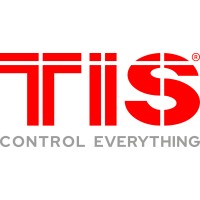 TIS Control specializes in high-end smart automation solutions designed for luxury homes and commercial spaces. Their smart switches integrate with lighting, HVAC, security systems, and multimedia devices, providing a holistic smart home experience. TIS switches utilize Zigbee and KNX communication protocols, ensuring high reliability and scalability. The company also focuses on energy-efficient solutions, helping users reduce electricity consumption while enhancing convenience.
TIS Control specializes in high-end smart automation solutions designed for luxury homes and commercial spaces. Their smart switches integrate with lighting, HVAC, security systems, and multimedia devices, providing a holistic smart home experience. TIS switches utilize Zigbee and KNX communication protocols, ensuring high reliability and scalability. The company also focuses on energy-efficient solutions, helping users reduce electricity consumption while enhancing convenience.
 Oakter is an Indian startup that has gained prominence in the affordable home automation segment. Their smart switches come with Wi-Fi and RF connectivity, making them suitable for both modern and traditional homes. Oakter offers retrofit smart switches, allowing users to upgrade their existing switchboards without extensive wiring changes. Their ecosystem supports AI-based automation, enabling smart scheduling and predictive energy management.
Oakter is an Indian startup that has gained prominence in the affordable home automation segment. Their smart switches come with Wi-Fi and RF connectivity, making them suitable for both modern and traditional homes. Oakter offers retrofit smart switches, allowing users to upgrade their existing switchboards without extensive wiring changes. Their ecosystem supports AI-based automation, enabling smart scheduling and predictive energy management.
Cubical Labs is a technology-driven Indian company focused on intelligent home automation. Their smart switches are equipped with AI-driven controls, real-time power monitoring, and remote accessibility. The company’s proprietary Cubical Smart Hub integrates multiple devices into a single ecosystem, allowing users to control lighting, fans, and appliances seamlessly. Their ultra-low latency response technology ensures quick execution of commands, setting them apart from competitors.
8. GM Modular GM Modular is a well-established player in India’s electrical solutions industry. Their range of smart touch switches is known for its sleek designs, capacitive touch functionality, and high durability. GM Modular’s smart switches support Wi-Fi and Bluetooth connectivity, allowing users to control them via smartphones or voice assistants. With a strong focus on customizable aesthetics, GM Modular is a preferred choice for homeowners looking to blend functionality with style.
GM Modular is a well-established player in India’s electrical solutions industry. Their range of smart touch switches is known for its sleek designs, capacitive touch functionality, and high durability. GM Modular’s smart switches support Wi-Fi and Bluetooth connectivity, allowing users to control them via smartphones or voice assistants. With a strong focus on customizable aesthetics, GM Modular is a preferred choice for homeowners looking to blend functionality with style.
 Anchor, a subsidiary of Panasonic, has been a household name in India for decades. The company has entered the smart switch market with its Panasonic Smart Home series, offering a combination of Japanese reliability and Indian adaptability. Their smart switches feature touch-sensitive panels, surge protection, and energy-saving modes. Anchor also provides customized automation solutions for residential and commercial spaces, making them a versatile choice for automation enthusiasts.
Anchor, a subsidiary of Panasonic, has been a household name in India for decades. The company has entered the smart switch market with its Panasonic Smart Home series, offering a combination of Japanese reliability and Indian adaptability. Their smart switches feature touch-sensitive panels, surge protection, and energy-saving modes. Anchor also provides customized automation solutions for residential and commercial spaces, making them a versatile choice for automation enthusiasts.
 Goldmedal has carved a niche in the Indian market with its smart, stylish, and user-friendly switches. Their i-Touch range features glass touch panels, remote-controlled switches, and integrated timers for automated scheduling. Goldmedal’s products are built with fire-resistant materials, ensuring safety alongside smart functionality. Their emphasis on wireless connectivity and long-term durability makes them a popular choice among Indian consumers.
Goldmedal has carved a niche in the Indian market with its smart, stylish, and user-friendly switches. Their i-Touch range features glass touch panels, remote-controlled switches, and integrated timers for automated scheduling. Goldmedal’s products are built with fire-resistant materials, ensuring safety alongside smart functionality. Their emphasis on wireless connectivity and long-term durability makes them a popular choice among Indian consumers.
India’s smart switch industry is poised for rapid growth as the demand for smart homes continues to surge. These top 10 manufacturers are driving the industry forward with their innovative technologies, energy-efficient solutions, and user-friendly designs. Whether it’s luxury home automation or cost-effective smart switch solutions, these brands cater to a wide range of consumer needs, making the dream of a fully connected home a reality in India.
The post Top 10 Smart Switch Manufacturers in India appeared first on ELE Times.
Infineon introduces new EiceDRIVER isolated gate driver ICs for traction inverters in electric vehicles
Infineon Technologies AG introduces new isolated gate driver ICs for electric vehicles to enhance its EiceDRIVER family. The devices are designed for the latest IGBT and SiC technologies. Furthermore, they support Infineon’s new HybridPACK Drive G2 Fusion module, the first plug’n’play power module that implements a combination of Infineon’s silicon and silicon carbide (SiC) technologies. The pre-configured third-generation EiceDRIVER products, 1EDI302xAS (IGBT) and 1EDI303xAS (SiC/ Fusion), are AEC-qualified and ISO 26262-compliant, ideal for traction inverters in cost-effective and high-performant xEV platforms.
The devices 1EDI3025AS, 1EDI3026AS and 1EDI3035AS provide a strong output stage of 20 A and drive high-performance inverters of all power classes up to over 300 kW. The variants 1EDI3028AS and 1EDI3038AS with an output stage of 15 A are ideal for use in entry-level battery electric vehicle (BEV) and plug-in hybrid electric vehicle (PHEV) inverters as well as for the excitation circuit of externally excited synchronous machines (EESM). In addition, the devices are equipped with the new tunable soft-off feature, which provides excellent short-circuit performance to support the latest SiC and IGBT technologies.
Various monitoring functions, such as an integrated self-test for desaturation protection (DESAT) and overcurrent protection (OCP), improve the handling of latent system errors while the new primary and secondary safe-state interface enables versatile system safety concepts. In addition, a continuously sampling 12-bit delta-sigma ADC with integrated current source can read the voltage directly from temperature measurement diodes or an NTC. The gate drivers also provide reinforced insulation according to VDE 0884-17:2021-10 to enable safe isolation following standardized qualification and production testing procedures. Furthermore, the compact package (PG-DSO-20) and excellent compatibility with the latest power stage technologies help customers to drive system integration and reduce design cycle times.
AvailabilityThe new EiceDRIVER isolated gate driver ICs for EV (1EDI3025AS, 1EDI3026AS, 1EDI3028AS, 1EDI3035AS, 1EDI3038AS) can be ordered now and samples are available. More information is available at www.infineon.com/eicedriver-xev.
The post Infineon introduces new EiceDRIVER isolated gate driver ICs for traction inverters in electric vehicles appeared first on ELE Times.
Semiconductors for Faster and Smaller Electronics in India
Semiconductors are the backbone of modern electronics, enabling faster, smaller, and more power-efficient devices. As India moves towards becoming a global hub for semiconductor manufacturing and design, the demand for cutting-edge chip technology is rising. The integration of advanced fabrication techniques, AI-driven chip design, and the push for indigenous semiconductor production are set to transform India’s electronics ecosystem.
The Need for Faster and Smaller ElectronicsThe electronics industry is driven by the demand for compact and high-performance devices, including smartphones, wearables, automotive electronics, and IoT devices. Key trends pushing the semiconductor industry forward include:
- Moore’s Law Advancements: Continuous scaling down of transistor sizes following the path of Extreme Ultraviolet Lithography (EUVL) for enhanced patterning precision and increased transistor density.
- AI and Edge Computing: Implementation of neuromorphic computing architectures using emerging materials like Resistive RAM (ReRAM) and Phase-Change Memory (PCM).
- 5G and Beyond: Deployment of compound semiconductors such as Gallium Nitride (GaN) and Indium Phosphide (InP) for high-frequency, high-power RF applications.
- Energy Efficiency: Adoption of tunnel field-effect transistors (TFETs) and spintronic devices for ultra-low-power computing.
With the shift to 5nm, 3nm, and upcoming 2nm process nodes, semiconductor manufacturers are pushing the limits of physics. These smaller nodes provide:
- Increased effective channel mobility by integrating high-k metal gate (HKMG) stacks and strained silicon engineering.
- Improved electrostatic control over transistors through stacked nanosheet transistors.
- Higher integration density through Self-Aligned Quadruple Patterning (SAQP).
- FinFET (Fin Field-Effect Transistor) technology dominates sub-10nm nodes, offering superior gate control through multi-gate designs.
- GAAFET (Gate-All-Around FET) represents the next evolution, transitioning towards nanosheet transistors, reducing leakage currents and enhancing threshold voltage tuning.
- 3D stacking (TSV – Through-Silicon Via) allows for vertical integration, minimizing signal propagation delays and interconnect parasitics.
- Chiplet-based designs using advanced heterogeneous integration enable diverse functional blocks to be assembled with high-bandwidth interconnects such as UCIe (Universal Chiplet Interconnect Express).
India is aggressively pushing for semiconductor self-sufficiency through initiatives like Semicon India Program and partnerships with global leaders. The focus areas include:
- Domestic Fab Development: India is investing in semiconductor fabs with partnerships involving TSMC, Intel, and GlobalFoundries.
- Design and IP Development: Indian startups and research institutions are working on AI-powered EDA (Electronic Design Automation) tools leveraging machine learning for physical design optimization.
- Material Advancements: R&D in wide-bandgap semiconductors like SiC (Silicon Carbide) and GaN (Gallium Nitride) for high-efficiency power electronics.
- ISMC Analog Fab: A proposed semiconductor fab with Israeli collaboration focusing on mixed-signal and RF chip manufacturing.
- Vedanta-Foxconn JV: Focused on setting up a 28nm technology node semiconductor fab in India.
- Tata Electronics: Exploring advanced semiconductor packaging and system-in-package (SiP) solutions.
- India Semiconductor Mission (ISM): A government-backed initiative to accelerate semiconductor fabrication, design, and advanced packaging capabilities.
While India is making significant strides in semiconductor manufacturing, challenges remain:
- Supply Chain Dependencies: Reliance on foreign suppliers for high-purity silicon wafers and photolithography tools.
- Skilled Workforce: Need for specialized talent in quantum computing, cryogenic electronics, and advanced packaging.
- High CAPEX Requirements: Semiconductor fabs require multi-billion-dollar investments with long ROI cycles.
Despite these challenges, India’s semiconductor sector is set to grow rapidly with government support, strategic partnerships, and technological innovations. The move towards faster, smaller, and more efficient semiconductors will drive India’s electronics industry forward, making the country a key player in the global semiconductor race.
ConclusionThe evolution of semiconductors is enabling smaller, faster, and more efficient electronics, shaping the future of computing, connectivity, and automation. With India’s push towards self-reliance in semiconductor manufacturing and the adoption of next-gen technologies like AI-driven chip design, 3D stacked transistors, and advanced node fabrication, the country is poised to become a global semiconductor powerhouse. As investments grow and expertise expands, India’s role in the semiconductor revolution will only strengthen, paving the way for a digitally empowered future.
The post Semiconductors for Faster and Smaller Electronics in India appeared first on ELE Times.
Amtech Shares Key Trends Shaping the Future of Electronics Manufacturing in 2025
Amtech Electrocircuits, a leading provider of manufacturing solutions, is proud to present insights into the key trends driving innovation and growth in 2025. From advanced automation and sustainability to AI integration and supply chain diversification, these trends are setting the stage for the next era of manufacturing excellence.
“These emerging trends align closely with our mission to deliver cutting-edge solutions that enhance efficiency, sustainability, and resilience across the electronics manufacturing industry,” said Jay Patel, CEO at Amtech. “Amtech is here to help our partners seize new opportunities and drive success in 2025 and beyond.”
Top Trends to Watch in 2025:- AI and Machine Learning Integration: Transforming processes like predictive maintenance, automated quality control, and production optimization, AI is enhancing efficiency and reducing downtime across the industry.
- Advanced Automation and Robotics: Collaborative robots (cobots) and lights-out manufacturing are revolutionizing production by enabling autonomous, high-throughput operations with minimal human intervention.
- Reshoring and Regionalization: Companies are prioritizing local manufacturing to mitigate global uncertainties and build resilient supply chains with faster lead times.
- Sustainability and Circular Economy: Greener practices, energy efficiency, and resource recycling are driving the shift toward a circular economy, ensuring environmental and economic benefits.
- Smart Manufacturing and IoT: Real-time data from interconnected devices in smart factories is powering predictive analytics and better decision-making, elevating productivity and quality.
- Additive Manufacturing (3D Printing): Moving beyond prototyping, 3D printing is enabling the production of complex components with reduced waste, particularly in high-value sectors like aerospace and medical devices.
- High-Mix, Low-Volume Production: Flexible production systems are meeting the growing demand for customized solutions without compromising efficiency or quality.
- Enhanced Cybersecurity Measures: With connected systems comes the need for robust cybersecurity to protect sensitive data and ensure operational integrity.
- Workforce Transformation: Upskilling employees to work alongside advanced technologies and addressing labor shortages through automation are reshaping the manufacturing workforce.
- Global Supply Chain Diversification: Exploring alternative sourcing strategies and partnerships is critical to building supply chain resilience and agility.
Amtech is dedicated to supporting its customers as they navigate these trends and transform their operations. With innovative solutions tailored to high-mix, low-volume production, sustainability initiatives, and smart manufacturing technologies, Amtech helps businesses embrace change and position themselves as industry leaders.
The post Amtech Shares Key Trends Shaping the Future of Electronics Manufacturing in 2025 appeared first on ELE Times.
Renewable Power: TotalEnergies Will Supply 1.5 TWh to STMicroelectronics in France over 15 Years
- 1st PPA in France for STMicroelectronics, aiming at 100% renewable sourcing by 2027
- Power comes from 2 recent wind and solar farms of 75 MW operated by TotalEnergies
TotalEnergies and STMicroelectronics, a global semiconductor leader serving customers across the spectrum of electronics applications, have signed a physical Power Purchase Agreement to supply renewable electricity to STMicroelectronics sites in France. This 15-year contract, started in January 2025, represents an overall volume of 1.5 TWh.
TotalEnergies will provide STMicroelectronics with the renewable power (including the guarantee of origin) produced by two recent wind and solar farms of 75 MW operated by TotalEnergies. This power comes with structuration services to transform intermittent production in a constant volume (“baseload”) of green electricity. It’s the first time in France that such a 15-year contract is provided. The positive impact of the wind and solar projects on the environment and on the communities was a key success factor in the signing of the deal.
“We are delighted to sign this agreement with STMicroelectronics, which demonstrates our ability to provide long-term and innovative clean firm power solutions tailored to our customers’ needs,” said Sophie Chevalier, Senior Vice President Flexible Power & Integration at TotalEnergies. “TotalEnergies aims to be a preferred partner to support tech industry players towards their decarbonization efforts, and this agreement showcases our commitment and capabilities.”
“This first PPA in France marks yet another important step towards ST’s goal of becoming carbon neutral in its operations (Scope 1 and 2 emissions, and partially scope 3) by 2027, including the sourcing of 100% renewable energy by 2027,” said Geoff West, EVP and Chief Procurement Officer at STMicroelectronics. “PPAs will play a major role in our transition, and we have already signed several to support ST’s operations in Italy and Malaysia. Starting in 2025, this PPA with TotalEnergies will provide a significant level of renewable energy for ST’s operations in France, which includes R&D, design, sales and marketing and large-volume chip manufacturing.”
TotalEnergies and electricity
As part of its ambition to get to net zero by 2050, TotalEnergies is building a world class cost-competitive portfolio combining renewables (solar, onshore and offshore wind) and flexible assets (CCGT, storage) to deliver clean firm power to its customers. By mid-2024, TotalEnergies’ gross renewable electricity generation installed capacity reached 24 GW. TotalEnergies will continue to expand this business to reach 35 GW in 2025 and more than 100 TWh of net electricity production by 2030.
The post Renewable Power: TotalEnergies Will Supply 1.5 TWh to STMicroelectronics in France over 15 Years appeared first on ELE Times.
The Latest IoT Wireless Technologies: Enabling the Future of Connectivity
The Internet of Things (IoT) has transformed industries by connecting billions of devices worldwide. From smart homes and industrial automation to healthcare and smart cities, IoT applications rely on robust wireless technologies for seamless communication. As IoT continues to expand, selecting the right wireless technology is crucial for optimizing performance, range, power consumption, and security. This article explores the latest and most effective IoT wireless technologies in 2025, helping businesses and developers make informed decisions.
1. Low Power Wide Area Networks (LPWANs)LPWAN technologies are ideal for long-range, low-power IoT applications. These networks support devices that need to send small amounts of data over vast distances while consuming minimal power. Key LPWAN technologies include:
LoRa (Long Range)LoRa operates in unlicensed spectrum bands and is widely used in smart cities, agriculture, and industrial applications. The latest advancements in LoRaWAN (LoRa Wide Area Network) include:
- Higher data rates through improved modulation schemes.
- Enhanced security with end-to-end encryption and authentication.
- Better network scalability supporting millions of connected devices.
NB-IoT is a cellular-based LPWAN technology designed for applications requiring reliable, low-power, and cost-effective connectivity. Recent upgrades include:
- Improved indoor coverage, making it ideal for smart meters and asset tracking.
- Lower power consumption, enabling battery life of up to 10 years.
- Wider adoption in 5G networks for massive IoT deployments.
Sigfox is another LPWAN technology focused on low-cost, low-energy IoT communications. The latest enhancements include:
- Ultra-low power operation, extending device lifespan.
- Improved downlink capabilities, enabling bidirectional communication.
- Global network expansion, increasing its availability in new regions.
5G technology is revolutionizing IoT by offering high-speed, low-latency connectivity. It is particularly beneficial for applications requiring real-time data processing, such as autonomous vehicles, smart factories, and remote healthcare.
Key Benefits of 5G for IoT:- Ultra-reliable low-latency communication (URLLC) for mission-critical applications.
- Massive Machine-Type Communications (mMTC) for large-scale IoT networks.
- Network slicing, allowing dedicated virtual networks for specific IoT applications.
As 5G infrastructure expands, its integration with AI and edge computing will further enhance IoT capabilities.
3. Wi-Fi 6 and Wi-Fi 7Wi-Fi continues to be a dominant wireless technology for IoT in homes, businesses, and industrial environments. The introduction of Wi-Fi 6 (802.11ax) and Wi-Fi 7 (802.11be) brings significant improvements:
Wi-Fi 6 Features:- Higher speeds and capacity, supporting multiple IoT devices simultaneously.
- Lower latency, improving performance in real-time applications.
- Better power efficiency, extending battery life for IoT sensors.
- Multi-link operation (MLO), enhancing reliability and reducing congestion.
- 320 MHz channel width, offering faster data rates.
- Optimized IoT connectivity, ensuring seamless device communication in dense environments.
Bluetooth remains a leading short-range IoT communication technology. The latest Bluetooth 5.3 update brings:
- Improved energy efficiency, extending battery life for wearables and sensors.
- Enhanced security features, protecting IoT devices from cyber threats.
- Better connection stability, reducing interference in crowded environments.
BLE is widely used in healthcare, smart home devices, and asset tracking due to its low power consumption and compatibility with smartphones.
5. Zigbee and Z-Wave ZigbeeZigbee is a low-power mesh networking protocol commonly used in smart home and industrial IoT applications. Recent improvements include:
- Faster data transmission, increasing responsiveness in IoT ecosystems.
- Interoperability with Matter, a unified IoT standard for smart devices.
- Enhanced security, protecting connected devices from hacking.
Z-Wave operates in the sub-1GHz frequency band, reducing interference with Wi-Fi networks. The latest advancements include:
- Longer range, improving connectivity for smart home automation.
- Stronger security protocols, preventing unauthorized access.
- Expanded device support, integrating with more IoT platforms.
UWB is gaining traction for high-precision location tracking in IoT applications. Key advantages include:
- Centimeter-level accuracy, making it ideal for asset tracking and secure access control.
- High data transmission rates, improving real-time communication.
- Low power consumption, ensuring extended device life.
Selecting the best IoT wireless technology depends on several factors:
- Range: LPWAN for long-range, Bluetooth/Zigbee for short-range.
- Power Consumption: LPWAN and BLE for energy efficiency.
- Data Rate: 5G and Wi-Fi 7 for high-speed applications.
- Security: Zigbee, Z-Wave, and Bluetooth 5.3 for enhanced protection.
As IoT adoption accelerates, the demand for reliable and efficient wireless connectivity continues to grow. From LPWAN and 5G to Wi-Fi 7 and UWB, the latest IoT wireless technologies offer tailored solutions for various applications. Businesses and developers must stay updated with these advancements to optimize their IoT deployments, ensuring seamless connectivity, enhanced security, and improved performance.
By leveraging the right wireless technology, organizations can unlock the full potential of IoT, driving innovation across industries and creating smarter, more connected ecosystems.
The post The Latest IoT Wireless Technologies: Enabling the Future of Connectivity appeared first on ELE Times.
Top 10 Weapon Locating Radars in the World: Cutting-Edge Technology for Modern Warfare
In modern warfare, the ability to detect and neutralize enemy artillery, rockets, and missiles is critical. Weapon Locating Radars (WLRs) have become indispensable tools for militaries worldwide, providing real-time detection, tracking, and counter-battery fire capabilities. These advanced systems use cutting-edge radar technology to pinpoint the origin of enemy fire, enabling rapid and precise retaliation. Here, we explore the top 10 weapon locating radars in the world, highlighting their features, capabilities, and significance in contemporary defense strategies.
1. AN/TPQ-53 (USA)
Developed by Lockheed Martin, the AN/TPQ-53 is one of the most advanced WLRs in the U.S. Army’s arsenal. It uses active electronically scanned array (AESA) technology to detect and track rockets, artillery, and mortars (RAM) with exceptional accuracy. The system is highly mobile, making it ideal for rapid deployment in dynamic combat environments. Its ability to simultaneously track multiple threats has made it a cornerstone of U.S. military operations.
2. ARTHUR (Sweden/Norway)
The ARTHUR (Artillery Hunting Radar) is a collaborative effort between Sweden and Norway, designed by Saab. This medium-range radar excels in detecting and locating enemy artillery and rocket launchers. ARTHUR is known for its reliability and adaptability, with versions deployed by several NATO countries. Its advanced signal processing capabilities allow it to operate effectively in cluttered environments.
3. COBRA (Germany/France/UK)
The COBRA (Counter Battery Radar) is a state-of-the-art system developed by a consortium of European defense giants, including Thales and Airbus. It is designed to detect and locate enemy artillery positions at long ranges (up to 100 km). COBRA’s phased-array radar and high processing power enable it to handle multiple threats simultaneously, making it a key asset for NATO forces.
4. BEL Weapon Locating Radar (India)
India’s Defence Research and Development Organisation (DRDO) developed the BEL Weapon Locating Radar (WLR) to meet the Indian Army’s requirements. This indigenously built radar is capable of detecting and tracking artillery shells, mortars, and rockets with high precision. Its mobility and ability to operate in harsh environments make it a valuable asset for India’s defense forces.
5. ZOOPARK-1M (Russia)
The ZOOPARK-1M is a Russian-made WLR designed to detect and locate enemy artillery, mortars, and rocket launchers. It is highly mobile and can be deployed quickly in battlefield conditions. The system’s advanced algorithms and signal processing capabilities allow it to operate effectively in electronic warfare environments, making it a key component of Russia’s military strategy.
6. ELM-2084 (Israel)
Developed by Israel Aerospace Industries (IAI), the ELM-2084 is a multi-mission radar system that excels in weapon locating and air defense. Its advanced AESA technology enables it to detect and track a wide range of threats, including rockets, artillery, and unmanned aerial vehicles (UAVs). The ELM-2084 is a key component of Israel’s Iron Dome defense system, providing critical early warning and targeting data.
7. SLC-2 (China)
China’s SLC-2 radar is a versatile weapon locating system designed to detect and track artillery, rockets, and missiles. It is known for its long-range detection capabilities and ability to operate in challenging environments. The SLC-2 has been exported to several countries, reflecting its reliability and effectiveness in modern combat scenarios.
8. SQUIRE (Netherlands)
The SQUIRE (Surveillance and Weapon Locating Radar) is a lightweight, mobile radar system developed by Thales Netherlands. It is designed to detect and locate mortars, artillery, and rockets with high accuracy. SQUIRE’s compact design and rapid deployment capabilities make it ideal for use in peacekeeping missions and asymmetric warfare.
9. AMB (France)
The AMB (Artillery Mortar Locating Radar) is a French-made system designed to detect and track enemy artillery and mortars. It is known for its high accuracy and ability to operate in dense electronic warfare environments. The AMB is widely used by the French Army and has been exported to several allied nations.
10. HALO (UK)
The HALO (Hostile Artillery LOcating) radar, developed by Thales UK, is a lightweight and mobile system designed for rapid deployment. It is capable of detecting and tracking mortars, artillery, and rockets with high precision. HALO’s advanced signal processing and compact design make it a valuable asset for modern militaries.
As conflicts become increasingly complex, WLRs will continue to play a vital role in ensuring battlefield dominance and protecting troops from enemy fire. With ongoing advancements in radar technology, the future of WLRs promises even greater precision, mobility, and adaptability. These systems are not just tools but strategic assets that solidify their place as indispensable components in the arsenal of modern militaries. The top 10 weapon locating radars in the world highlight the global effort to stay ahead in defense technology, ensuring safety and superiority in an ever-evolving battlefield landscape.
The post Top 10 Weapon Locating Radars in the World: Cutting-Edge Technology for Modern Warfare appeared first on ELE Times.
Top 10 Robot Manufacturers in India
India’s robotics industry has witnessed tremendous growth in recent years, fueled by the rising demand for automation across various sectors such as manufacturing, healthcare, logistics, and agriculture. With a strong push toward innovation and Make in India initiatives, Indian robotics companies are making significant strides on the global stage. Here’s a look at the top 10 robot manufacturers in India, leading the charge in this transformative industry.
1. GreyOrangeHeadquarters: Gurugram
GreyOrange is a global name in robotics and warehouse automation. The company designs and manufactures AI-powered robotic systems such as Autonomous Mobile Robots (AMRs) and Sortation Robots. Their solutions are widely used in e-commerce, retail, and logistics industries. GreyOrange’s innovative approach has positioned it as a pioneer in robotic fulfillment solutions.
2. Hi-Tech Robotic SystemzHeadquarters: Gurugram
Hi-Tech Robotic Systemz specializes in autonomous mobility solutions and industrial automation. The company develops robotic systems for material handling, warehouse automation, and autonomous vehicles. Their expertise in AI and machine learning ensures highly efficient and scalable solutions.
3. Milagrow RobotsHeadquarters: Gurugram
Milagrow is a well-known name in consumer robotics, particularly for its floor-cleaning and service robots. The company offers a range of robots for domestic, industrial, and agricultural applications. Their focus on user-friendly designs and affordability has made them a household name in India.
4. SystemanticsHeadquarters: Bengaluru
Systemantics focuses on building industrial robots to enhance productivity in manufacturing. The company specializes in articulated robots and SCARA robots, which are used for tasks such as assembly, material handling, and packaging. Their indigenously developed solutions aim to make robotics more accessible to Indian manufacturers.
5. GridbotsHeadquarters: Ahmedabad
Gridbots is a leader in AI and robotics, providing solutions for industries like defense, nuclear, and automotive. The company develops robotic systems for inspection, quality control, and hazardous material handling. Their robots are known for their precision and reliability in complex environments.
6. Asimov RoboticsHeadquarters: Kochi
Asimov Robotics focuses on humanoid robots and robotics for healthcare, education, and customer service. The company’s robots are designed for applications such as patient care, training, and visitor assistance. Their innovation in humanoid technology is paving the way for advanced human-robot interaction.
7. ABB IndiaHeadquarters: Bengaluru
A subsidiary of the global automation giant ABB, ABB India is a key player in industrial robotics. The company offers a wide range of robotic solutions for welding, painting, assembly, and material handling. ABB India’s robots are widely used in automotive, electronics, and food processing industries.
8. Fanuc IndiaHeadquarters: Bengaluru
Fanuc India, a subsidiary of Fanuc Corporation, is a market leader in CNC machines and industrial robots. Their robots are used for automation in sectors like automotive, aerospace, and electronics. Known for their reliability and precision, Fanuc India’s robots are a benchmark in industrial automation.
9. Kuka Robotics IndiaHeadquarters: Pune
Kuka Robotics India specializes in industrial robots and automation solutions. Their robots are used for applications such as welding, material handling, and assembly. Kuka’s advanced robotic systems are widely adopted in automotive and manufacturing industries across India.
10. Yaskawa IndiaHeadquarters: Bengaluru
Yaskawa India is a leading provider of robotics and automation solutions. Their offerings include industrial robots for welding, assembly, packaging, and palletizing. Yaskawa’s robots are known for their speed, precision, and adaptability in various industrial processes.
ConclusionIndia’s robotics industry is rapidly evolving, driven by the demand for automation and technological advancements. With continued investments in R&D and government support, these top 10 robot manufacturers in India are set to shape the future of automation, not just within the country but globally as well.
The post Top 10 Robot Manufacturers in India appeared first on ELE Times.
Top 10 Drone Parts Companies in India
India’s drone ecosystem has seen remarkable growth in recent years, driven by government initiatives, advancements in technology, and a booming demand for drones across sectors like agriculture, defense, logistics, and surveillance. With the rise of drone manufacturing comes the need for reliable, high-quality components. Here, we take a look at the top 10 drone parts companies in India that are propelling this industry forward.
1. IdeaForgeHeadquarters: Mumbai
IdeaForge is one of India’s leading drone manufacturers, specializing in Unmanned Aerial Vehicles (UAVs). Beyond making drones, the company also develops critical components like flight controllers and communication systems. Known for its rugged and high-performance designs, IdeaForge caters to industries like defense, mining, and disaster management.
2. Aero360Headquarters: Hyderabad
Aero360 has established itself as a key player in providing components like propellers, frames, and motors tailored for high-performance drones. The company emphasizes customizability, allowing clients to design solutions specific to their needs. Aero360’s products are widely used in both commercial and industrial applications.
3. Garuda AerospaceHeadquarters: Chennai
Garuda Aerospace specializes in agricultural and commercial drones but also develops vital parts such as battery systems, GPS modules, and autopilots. The company is heavily involved in precision farming and surveillance, and its in-house development of components ensures high reliability.
4. Asteria AerospaceHeadquarters: Bengaluru
Asteria Aerospace is another significant name in India’s drone landscape, focusing on both hardware and software solutions. They design and manufacture high-grade payload systems, gimbals, and communication modules that cater to sectors like surveillance, mapping, and infrastructure inspection.
5. Omnipresent Robot TechHeadquarters: Gurgaon
Omnipresent Robot Tech is a prominent provider of drone parts, including sensors, cameras, and propulsion systems. The company has made waves in areas such as industrial inspections, disaster management, and security. They are known for their focus on cutting-edge technology and seamless integration of components.
6. Dhaksha Unmanned SystemsHeadquarters: Chennai
Specializing in agricultural drones, Dhaksha Unmanned Systems also produces essential components like spraying mechanisms, power distribution boards, and electronic speed controllers. Their innovative solutions are particularly beneficial for India’s farming community, addressing challenges like crop monitoring and pesticide application.
7. TATA Advanced SystemsHeadquarters: Hyderabad
TATA Advanced Systems is a pioneer in the defense and aerospace sector, including the drone industry. The company develops advanced components such as sensors, communication systems, and power solutions, which are integrated into UAVs designed for military and industrial applications.
8. Adani Defence and AerospaceHeadquarters: Ahmedabad
Adani Defence and Aerospace is a key contributor to India’s UAV ecosystem, offering a range of components such as propulsion systems, surveillance payloads, and radar technologies. With a strong focus on defense, their products ensure high performance and reliability in critical missions.
9. BotLab DynamicsHeadquarters: New Delhi
BotLab Dynamics has gained attention for its innovative work in drone light shows and swarming technology. The company also develops parts like communication systems and flight controllers, enabling seamless coordination between multiple UAVs. Their technology is increasingly being used in events, defense, and entertainment.
10. Skylark DronesHeadquarters: Bengaluru
Skylark Drones focuses on enterprise solutions but also contributes to the component supply chain. They produce payload systems, camera mounts, and power solutions for drones used in mining, infrastructure, and surveying. Their ability to deliver scalable solutions has made them a trusted name in the industry.
ConclusionIndia’s drone industry is not just limited to manufacturing complete UAVs; it is also creating a robust supply chain of critical components. The top 10 drone parts companies in India, including IdeaForge, Garuda Aerospace, and Asteria Aerospace, are leading the charge by innovating and producing reliable parts that meet diverse industry demands. As the industry continues to evolve, these companies will play a crucial role in defining India’s position in the global drone ecosystem.
The post Top 10 Drone Parts Companies in India appeared first on ELE Times.
BayaTronics Expands Testing Capabilities with Seica Pilot V8 NEXT Flying Probe System
Seica, Inc. is pleased to announce that BayaTronics, a leading technology, supply chain and manufacturing solutions provider, has expanded its advanced testing capabilities with the acquisition of the PILOT V8 NEXT. The system was recently installed in BayaTronics’ new state-of-the-art facility in Concord, NC.
This state-of-the-art flying probe test system reaffirms BayaTronics’ commitment to producing top-quality PCBs for critical applications across various industries.
The PILOT V8 NEXT delivers unmatched performance, speed and flexibility. Its vertical architecture allows for simultaneous probing on both sides of the Unit Under Test (UUT), optimizing efficiency and ensuring precise test results. This dual-sided probing capability significantly enhances productivity while maintaining the high testing standards required for today’s advanced electronics manufacturing.
“At BayaTronics, we produce top-quality PCBs for critical applications,” said Dirk Warriner, CEO of BayaTronics. “Seica’s state-of-the-art flying probe test system enhances our testing processes, ensuring superior accuracy and efficiency, which is critical for the success of our customers’ products.”
As a trusted partner for domestic customers, BayaTronics provides high-volume, cost-competitive solutions without compromising on quality. The company specializes in printed circuit board assembly (PCBA), final assembly, and material management, offering comprehensive support for end-to-end supply chain requirements. By assisting customers with design for manufacturability, new product introduction, and material procurement, BayaTronics helps optimize costs and streamline production processes.
BayaTronics’ acquisition of the PILOT V8 NEXT reinforces its leadership in advanced manufacturing solutions, enhancing its capacity to deliver precision and efficiency to meet customer needs.
The post BayaTronics Expands Testing Capabilities with Seica Pilot V8 NEXT Flying Probe System appeared first on ELE Times.
Light Sensor Market Illuminating Trends and Innovations Shaping the Future of Sensing Technology
The Light Sensor Market has been experiencing significant growth in recent years, driven by technological advancements, a rise in smart devices, and increasing demand across various industries such as automotive, consumer electronics, and healthcare. The market is projected to continue its upward trajectory, spurred by innovations that are enhancing the accuracy, efficiency, and functionality of light sensing technologies.
The Light Sensor Market is expected to surpass a valuation of US$ 4.8 billion by the close of 2032, maintaining a compound annual growth rate (CAGR) of 8.2% from 2022 to 2032. During this period, the market is projected to witness an absolute dollar opportunity of US$ 2.6 billion, driven by rising demand for light sensors across various industries.
As the world becomes increasingly connected, light sensors are poised to play a pivotal role in shaping the future of sensing technology, enabling smarter and more intuitive systems in our daily lives.
Key Trends and InnovationsOne of the most notable trends in the Light Sensor Market is the integration of these sensors into a broad range of devices and applications. The automotive industry, for example, has embraced light sensors to enhance vehicle safety and functionality. Adaptive headlights, which adjust the direction and range of a car’s headlights based on the surrounding light conditions, are just one application that relies heavily on light sensors. This innovation improves driving safety by optimizing visibility in changing environmental conditions, such as fog, rain, or low-light scenarios.
Another significant trend is the growth of smart homes and buildings. The increasing adoption of Internet of Things (IoT)-enabled devices has driven the demand for light sensors to automate lighting control systems. These sensors detect ambient light levels and adjust lighting accordingly, offering energy efficiency and cost savings. According to Persistence Market Research, sensors that enable features like automated window shading and intelligent daylight harvesting are becoming more prevalent, ensuring that buildings maintain optimal lighting conditions without wasting energy.
Technological AdvancementsTechnological advancements have significantly improved the performance and versatility of light sensors. One of the most impactful developments has been the integration of multiple sensing capabilities into a single sensor unit. This multi-sensor approach allows for more complex and precise measurements, providing valuable data for applications such as smart cities and industrial automation. These sensors can now detect not only light intensity but also color temperature, UV exposure, and even proximity, making them highly adaptable for a variety of use cases.
Miniaturization of sensors is another innovation that is transforming the market. As devices continue to get smaller and more portable, the demand for compact, efficient light sensors has surged. The advancement of microelectromechanical systems (MEMS) technology has been a key enabler of this miniaturization. MEMS-based light sensors offer improved accuracy and sensitivity while maintaining a small footprint, making them ideal for applications in wearables, smartphones, and other consumer electronics.
Market Drivers and OpportunitiesThe increasing adoption of smart devices and automation systems is a key driver of the Light Sensor Market. As consumers demand more intelligent and energy-efficient products, manufacturers are incorporating light sensors into a wide range of devices, from home appliances to health monitoring systems. The automotive sector, too, is capitalizing on these advancements, particularly in the development of autonomous vehicles, where light sensors are integral to providing real-time data for navigation and environmental awareness.
Furthermore, the rise of energy-conscious consumers has created a robust market for light sensors in energy management applications. By enabling more efficient lighting control, light sensors are helping to reduce energy consumption in both residential and commercial settings. This trend is particularly relevant in the context of global sustainability efforts, where energy efficiency and conservation are top priorities.
The healthcare industry is also a growing source of demand for light sensors. These sensors are being used in medical devices that monitor patients’ health conditions, such as pulse oximeters that measure blood oxygen levels through light absorption. As healthcare becomes more personalized and technology-driven, the role of light sensors in patient care and monitoring is expected to expand significantly.
Challenges and RestraintsWhile the Light Sensor Market presents vast opportunities, it is not without its challenges. One of the key obstacles is the high cost associated with advanced light sensor technologies. Although the miniaturization and increased efficiency of these sensors have made them more affordable, the initial investment in cutting-edge solutions can still be a barrier for smaller businesses or emerging markets.
Another challenge is the need for greater standardization across the industry. As the market continues to evolve, there is a pressing need for standardized protocols and communication systems to ensure seamless integration across various devices and applications. This will be essential for promoting widespread adoption and ensuring compatibility between different manufacturers’ products.
ConclusionThe Light Sensor Market is evolving at a rapid pace, driven by advancements in technology and the increasing integration of sensors into a wide range of industries. As smart devices, IoT, and automation continue to shape our world, the role of light sensors in providing real-time data and enabling intelligent systems will become more important than ever. With ongoing innovations and a growing focus on energy efficiency and sustainability, the future of light sensors looks bright, offering exciting opportunities for manufacturers, developers, and end-users alike.
The post Light Sensor Market Illuminating Trends and Innovations Shaping the Future of Sensing Technology appeared first on ELE Times.
Keysight Introduces Comprehensive LPDDR6 Solution for End-to-End Memory Design and Test Workflows
Keysight Technologies, Inc. announced the Low-Power Double Data Rate 6 (LPDDR6) design and test solution, a complete design and test solution to support the next technology wave for memory systems. The solution significantly improves device and system validation, providing new test automation tools necessary for advancing AI, especially in mobile and edge devices.
The memory market is evolving due to the rising demand for high-performance computing, AI, and energy-efficient mobile applications. LPDDR6 significantly enhances performance and efficiency to support next-generation compute system requirements, making it a crucial upgrade for contemporary devices.
Test complexity has grown with the adoption of next-generation memory devices such as LPDDR6, HBM4, and GDDR7. These technologies demand advanced test methods to ensure reliability and performance, and reducing test times while maintaining accuracy is a constant challenge.
Keysight’s complete workflow solution consists of transmitter and receiver test applications and the Advanced Design System (ADS) Memory Designer workflow solution. The LPDDR6 test solution can be paired with Keysight EDA software and the Keysight Memory Designer bundle to achieve faster design confidence from simulation to verification and test. The LPDDR6 test automation solution is based on Keysight’s UXR oscilloscope and high-performance M8040A Bit Error Ratio Tester.
LPDDR6’s impact is expected to reach beyond mobile devices. The new memory standard’s combination of high performance and power efficiency makes it particularly suitable for AI and machine learning applications, high-speed digital computing, automotive systems, data centers, and other edge applications areas where the balance between processing power and energy consumption is crucial.
Key Benefits of Keysight’s LPDDR6 Test Solution: Accelerate Time-to-Market with Advanced Transmitter Testing- Reduce validation time with fully automated compliance testing and characterization
- Capture precise measurements quickly using industry-leading low-noise technology
- Debug design issues faster with streamlined data analysis tools
- Analyze device BER performance with extrapolated eye mask margin testing
- Achieve accurate signal measurements directly from BGA packages with specialized de-embedding capabilities
- Validate designs confidently using proven Bit Error Ratio testing methodology
- Pinpoint performance issues early by testing against multiple jitter, crosstalk, and noise scenarios
- Maximize signal integrity through detailed BER analysis and receiver equalization optimization
- Ensure high interoperability with both device and host controller validation
- Enable faster user experiences with higher data rates support
- Extend battery life and reduce power consumption in mobile and data center applications
- Build more reliable products with enhanced data integrity and system stability features
Dr. Joachim Peerlings, Vice President and General Manager, Network and Datacenter Solutions, Keysight, said: “As a leader in memory design and test solutions, Keysight continues to collaborate with JEDEC to develop the LPDDR6 standard. This new LPDDR6 standard is set to revolutionize the market, offering unprecedented speed, efficiency, and reliability, enabling the industry’s AI Edge rollout. As the deployment and use of next-generation memory devices are growing, Keysight has achieved a significant milestone in enabling faster time to market for LPDDR6 memory designs.”
The new receiver and transmitter solution will be shown to the public for the first time at DesignCon 2025, Jan 29-30, at booth number 1039 in Santa Clara, California.
The post Keysight Introduces Comprehensive LPDDR6 Solution for End-to-End Memory Design and Test Workflows appeared first on ELE Times.
Microchip Launches the Next Generation of its Low-Noise Chip-Scale Atomic Clock Featuring a Lower Profile Height of Less Than ½ Inch
The Low-Noise Chip-Scale Atomic Clock, model SA65-LN, enables frequency mixing for battery-powered devices
Developers need ultra-clean timing devices for aerospace and defense applications where size, weight, and power (SWaP) constraints are critical. A Chip-Scale Atomic Clock (CSAC) is an essential reference for these systems, providing the necessary precise and stable timing where traditional atomic clocks are too large or power-hungry and where other satellite-based references may be compromised. Microchip Technology today announces its second generation Low-Noise Chip-Scale Atomic Clock (LN-CSAC), model SA65-LN, in a lower profile height and designed to operate in a wider temperature range, enabling low phase noise and atomic clock stability in demanding conditions.
Microchip has developed its own Evacuated Miniature Crystal Oscillator (EMXO) technology and integrated it into a CSAC, enabling the model SA65-LN to offer a reduced profile height of less than ½ inch, while maintaining a power consumption of <295 mW. The new design is optimal for aerospace and defense mission-critical applications such as mobile radar, dismounted radios, dismounted IED jamming systems, autonomous sensor networks and unmanned vehicles due to its compact size, low power consumption and high precision. Operating within a wider temperature range of -40°C to +80°C, the new LN-CSAC is designed to maintain its frequency and phase stability in extreme conditions for enhanced reliability.
“A significant advancement in frequency technology, our next generation LN-CSAC provides exceptional stability and precision in a remarkably compact form,” said Randy Brudzinski, corporate vice president of Microchip’s frequency and time systems business unit. “This device enables our customers to achieve superior signal clarity and atomic-level accuracy, while also benefiting from reduced design complexity and lower power consumption.”
The LN-CSAC combines the benefits of a crystal oscillator and an atomic clock in a single compact device. The EMXO offers low-phase noise at 10 Hz < -120 dBc/Hz and Allan Deviation (ADEV) stability <1E-11 at a 1-second averaging time. The atomic clock provides initial accuracy of ±0.5 ppb, low frequency drift performance of <0.9 ppb/mo, and maximum temperature-induced errors of < ±0.3ppb. Together, the LN-CSAC can save board space, design time and overall power consumption compared to designs that feature two oscillators.
The crystal signal purity and low-phase noise of LN-CSAC are designed to ensure high-quality signal integrity, which is essential for frequency mixing. The atomic-level accuracy allows for longer intervals between calibrations, which can help extend mission durations and potentially reduce maintenance requirements.
Microchip’s products for aerospace and defense are designed to meet the stringent requirements of these markets, offering high reliability, precision and durability. The company’s solutions include microcontrollers (MCUs), microprocessors (MPUs), FPGAs, power management, memory, security and timing devices that ensure optimal performance in mission-critical applications such as avionics, radar systems, and secure communications. Visit Microchip’s aerospace and defense solutions web page for more information.
The post Microchip Launches the Next Generation of its Low-Noise Chip-Scale Atomic Clock Featuring a Lower Profile Height of Less Than ½ Inch appeared first on ELE Times.
The world’s smallest eSIM solution for mobile consumer devices: Infineon launches OPTIGA™ Connect Consumer OC1230
Wearables, smartphones, tablets: In the consumer sector in particular, the demand for ever greater functionality, simplicity, and battery lifetime is increasing. Infineon Technologies AG contributes to these requirements with the introduction of the OPTIGA Connect Consumer OC1230. It is the world’s smallest GSMA-compliant and first 28 nm eSIM solution. OPTIGA Connect Consumer allows up to 50 percent less energy consumption compared to eSIMs on the market, extending the lifetime of the device’s battery without compromising on performance. It also contributes largely to more convenience since eSIMs can be managed remotely, making haptic SIM changes abundant thus saving time and resources and allowing for greater flexibility. Smartphone users can switch between different providers more easily, manufacturers can be more flexible in their design since physical access is not required. This can be a large advantage in IoT devices. Above all, OPTIGA Connect Consumer OC1230 is ideal for consumer devices such as smartphones, tablets, and notebooks, and even for small devices such as smartwatches and other wearables as well as 5G routers and POS payment terminals.
The OPTIGA Connect Consumer OC1230’s security architecture is based on Arm v8 and Infineon’s Integrity Guard 32 technology for increased performance and reduced power consumption. It enables a gain of 25 percent power/performance ratio compared to existing eSIMs on the market, thus extending the lifetime of the device’s battery. Remote SIM provisioning (RSP) and multiple enabled profiles (MEP) compliant with GSMA SGP.22 v3 enhance the end user experience. Users can download and store several mobile network operator profiles and remotely activate multiple profiles simultaneously.
With only 1.8 x 1.6 x 0.4 mm, the ultra-small chip-scale packaging reduces printed circuit board (PCB) space requirements by a factor of 37 relative to Nano SIMs and by a factor of 130 compared to standard SIMs. The OPTIGA Connect Consumer OC1230 is also available in X2QFN20 (3.0 x 3.0 x 0.3 mm) package. The eSIM solution features a large memory of 1 MB to accommodate multiple network operator profiles along with additional applications and user data.
OPTIGA Connect Consumer OC1230 is security evaluated according to BSI-CC-PP-0100-2018, specified in GSMA SGP.25 and is based on post-quantum-cryptography-(PQC) ready hardware.
The post The world’s smallest eSIM solution for mobile consumer devices: Infineon launches OPTIGA™ Connect Consumer OC1230 appeared first on ELE Times.
Top 10 Smart Lighting Companies in India
India’s smart lighting industry is witnessing rapid growth, driven by innovation, sustainability, and advancements in technology. Leading companies are transforming traditional lighting systems into intelligent solutions that cater to modern lifestyles and smart homes. From globally renowned brands like Philips and Osram to trusted domestic players like Havells, Syska, and Bajaj Electricals, these companies are revolutionizing how lighting integrates with everyday life. With features such as energy efficiency, voice control, automation, and seamless connectivity to home automation platforms, the industry is setting benchmarks for convenience and customization. As the demand for smart living increases, these companies continue to push the boundaries of innovation, offering sustainable and user-centric lighting solutions across residential, commercial, and industrial sectors.
Philips India Limited
Philips India Limited, a global leader in lighting solutions, is renowned for its innovative smart lighting products that combine advanced technology with seamless functionality. The company offers an extensive range of smart bulbs, fixtures, and lighting systems designed to integrate effortlessly with popular home automation platforms like Alexa, Google Assistant, and Apple HomeKit. Known for enhancing convenience, energy efficiency, and customization, Philips continues to redefine modern lighting solutions for homes, offices, and public spaces.
Havells India Limited
Havells India Limited is a leading name in the electrical and consumer goods industry, renowned for its innovative and energy-efficient solutions. The company offers a wide range of smart lighting products, including LED bulbs, fixtures, and automation systems designed to elevate modern living. Known for its commitment to quality, sustainability, and cutting-edge technology, Havells seamlessly integrates advanced lighting solutions with user-friendly features, making it a trusted choice for homes, offices, and commercial spaces across India.
Syska LED Lights Pvt. Ltd.
Syska LED Lights Pvt. Ltd. is a prominent player in the smart lighting industry, known for its innovative and energy-efficient solutions. The company offers a diverse range of smart LED lighting products, including bulbs and fixtures, that are compatible with voice assistants like Alexa and Google Assistant. With features like customizable colors, brightness levels, and scheduling options, Syska’s smart lighting solutions are designed to enhance convenience and elevate modern lifestyles. The brand’s focus on sustainability and cutting-edge technology has made it a preferred choice for homes, offices, and commercial spaces across India.
Bajaj Electricals Ltd.
Bajaj Electricals Ltd., a trusted name with a rich legacy in the lighting industry, has successfully ventured into the smart lighting segment. The company offers a wide range of innovative products that blend traditional reliability with modern technology, including smart LED bulbs, fixtures, and automation systems. Known for its commitment to quality and energy efficiency, Bajaj’s smart lighting solutions are designed to provide convenience, customization, and sustainability, making them ideal for homes, offices, and commercial spaces across India.
Wipro Lighting
Wipro Lighting is a leading provider of innovative lighting solutions, offering a diverse range of smart lighting products tailored for residential and commercial spaces. The company focuses on delivering energy-efficient and sustainable solutions that combine advanced technology with superior design. Wipro’s smart lighting systems provide customizable options, including automation and voice-controlled features, ensuring convenience and enhanced user experiences. With a strong emphasis on sustainability and innovation, Wipro Lighting continues to set benchmarks in the lighting industry.
Osram India Private Limited
Osram India Private Limited, a subsidiary of the globally renowned lighting company Osram, is a leader in advanced smart lighting solutions. The company caters to a wide range of sectors, including automotive, residential, and commercial lighting, offering innovative and energy-efficient products. Osram’s smart lighting solutions are designed to integrate seamlessly with modern technologies, providing enhanced functionality and customization. With a strong focus on quality, innovation, and sustainability, Osram India continues to redefine lighting standards across industries.
Samsung India Electronics Private Ltd.
Samsung India Electronics Private Ltd. is a leading innovator in smart technology, offering a range of smart lighting solutions that seamlessly integrate with its extensive ecosystem of smart home devices. Designed to enhance connected living, Samsung’s smart lighting products provide advanced features like voice control, automation, and energy efficiency. With a focus on delivering convenience, customization, and cutting-edge technology, Samsung continues to redefine modern living experiences for homes and businesses alike.
The post Top 10 Smart Lighting Companies in India appeared first on ELE Times.
Top 10 Anti Drone Companies in India
The Indian skies are increasingly vulnerable to rogue drones, necessitating the development of robust countermeasures. A burgeoning ecosystem of Indian companies is rising to the challenge, developing innovative anti-drone technologies to safeguard critical infrastructure and national security. From AI-powered detection systems to electronic warfare solutions, these companies are at the forefront of ensuring airspace safety in a rapidly evolving threat landscape. Here are 10 of the top anti-drone companies in India:
- Throttle Aerospace Systems is a leading innovator in anti-drone technology, recognized for its cutting-edge solutions that protect critical infrastructure and ensure safety in airspace. Among its most notable offerings is the “Defender” system, which leverages artificial intelligence and vision-based techniques to effectively detect, track, and neutralize unauthorized drones. By integrating advanced sensing, machine learning, and automated countermeasures, Throttle Aerospace Systems provides reliable and scalable solutions to mitigate the growing threat of drones in both military and civilian contexts. The company is at the forefront of shaping the future of drone defense, ensuring secure environments across various sectors.
2. Alpha Design Technologies is a leading innovator in the development of electronic warfare systems, with a strong focus on countering emerging threats like drones. Specializing in advanced anti-drone technologies, the company designs and manufactures cutting-edge solutions to detect, track, and neutralize unauthorized UAVs (unmanned aerial vehicles). Leveraging its deep expertise in electronic systems and defense technologies, Alpha Design Technologies provides critical capabilities to safeguard airspace and sensitive infrastructure from drone-based threats. Through its commitment to research, development, and deployment of state-of-the-art electronic warfare solutions, the company plays a pivotal role in enhancing national security and defense operations.
3. Adani Defence & Aerospace is a key player in India’s defense and aerospace sector, renowned for its commitment to advancing cutting-edge technologies to support national security. With a growing focus on developing anti-drone solutions, the company is working to address the increasing challenges posed by unmanned aerial vehicles (UAVs) in military and civilian spaces. Adani Defence & Aerospace leverages its deep expertise in defense systems, electronics, and aerospace technologies to design innovative counter-drone solutions that ensure the safety of critical infrastructure and airspace. Through continuous research and development, the company is reinforcing its position as a leader in defense innovation, contributing to India’s defense modernization efforts.
4. IdeaForge, a prominent name in the drone industry, is renowned for its cutting-edge unmanned aerial vehicles (UAVs) that cater to diverse sectors such as defense, agriculture, and infrastructure. While primarily known for its drone innovations, the company is also expanding its capabilities to address the growing concerns surrounding drone-related threats. By developing anti-drone technologies, IdeaForge aims to protect its own UAVs from malicious interference and enhance the safety and security of airspace. Through the integration of advanced countermeasures and smart defense systems, IdeaForge is positioning itself at the forefront of both drone and anti-drone technology, ensuring a balanced approach to UAV safety and security.
5. Paras Aerospace is a leading innovator specializing in the development of counter-Unmanned Aerial Systems (C-UAS) technologies, aimed at addressing the growing threat of unauthorized drones. The company focuses on creating advanced solutions for drone detection, tracking, and neutralization, including cutting-edge jamming technologies to disrupt and disable rogue UAVs. With a strong commitment to enhancing airspace security, Paras Aerospace’s counter-UAS systems are designed to safeguard critical infrastructure, military assets, and public spaces from potential drone-based risks.
6. Kadet Defence Systems is a dynamic player in the field of counter-drone technology, offering a comprehensive range of anti-drone solutions designed to safeguard critical infrastructure and airspace. The company specializes in advanced systems for drone detection, tracking, and jamming, enabling effective countermeasures against unauthorized UAVs. With a focus on precision and reliability, Kadet Defence Systems provides cutting-edge technologies that help mitigate the risks posed by drones in both civilian and defense contexts. Their solutions are pivotal in enhancing security protocols, ensuring the protection of sensitive areas from potential drone-related threats.
7. Sagar Defence is a leading provider of advanced anti-drone solutions, offering a comprehensive suite of technologies designed to detect, track, and neutralize unauthorized drones. Specializing in cutting-edge drone detection and jamming systems, the company plays a crucial role in enhancing airspace security for both military and civilian applications. Sagar Defence’s solutions are built to protect critical infrastructure, military assets, and public safety from the growing threat of drone-based intrusions.
8. Veda Defence Systems is a specialized technology company focused on developing advanced electronic warfare systems, with a strong emphasis on countering drone-based threats. The company’s expertise lies in creating cutting-edge anti-drone technologies that incorporate electronic jamming, detection, and neutralization capabilities to safeguard critical infrastructure and airspace. With a deep commitment to defense innovation, Veda Defence Systems designs highly reliable solutions to counter the growing risks posed by unmanned aerial vehicles (UAVs) in both military and civilian environments.
9. Raphe mPhibr is a leading provider of advanced anti-drone solutions, offering a range of cutting-edge technologies designed to detect, track, and neutralize unauthorized drones. Specializing in drone detection, tracking, and jamming systems, the company delivers reliable and effective countermeasures to protect critical infrastructure and airspace. With a focus on precision and real-time response, Raphe mPhibr’s solutions are tailored to address the evolving threats posed by unmanned aerial vehicles (UAVs) in both civilian and military sectors.
10. NewSpace Research and Technologies is a cutting-edge company specializing in the development of advanced technologies aimed at enhancing defense and security. With a particular focus on anti-drone solutions, the company is at the forefront of creating innovative systems designed to detect, track, and neutralize unauthorized drones. Leveraging state-of-the-art technologies, NewSpace Research and Technologies provides critical solutions to protect airspace, military installations, and critical infrastructure from the growing threat posed by unmanned aerial vehicles (UAVs).
The post Top 10 Anti Drone Companies in India appeared first on ELE Times.
Top 10 Solar Power Plants in India
India is blazing a trail in renewable energy, and its solar power plants are at the forefront of this transformation. From the sun-drenched deserts of Rajasthan to the sunny plains of Karnataka and Andhra Pradesh, the country is home to some of the largest and most innovative solar parks in the world. These mega installations are not only harnessing solar power but also driving sustainable development and contributing to India’s ambitious renewable energy goals. This article highlights the top solar power plants in India, showcasing their scale, innovation, and impact on the nation’s journey toward a greener and more energy-secure future.
- Bhadla Solar Park, Rajasthan
Nestled in the sun-drenched deserts of Jodhpur, Rajasthan, Bhadla Solar Park stands tall as a beacon of India’s renewable energy revolution. Spanning an impressive 14,000 acres, it is not only the largest solar park in India but also one of the largest in the world. With a massive installed capacity of 2,245 MW, this engineering marvel has transformed the barren, arid land of Bhadla into a thriving hub of clean energy production. Known for its high solar radiation and minimal rainfall, the region provides ideal conditions for harnessing solar power, making Bhadla Solar Park a critical contributor to India’s ambitious goal of achieving 500 GW of renewable energy capacity by 2030.
- Pavagada Solar Park, Karnataka
Spread across a sprawling 13,000 acres in the sunny plains of Tumkur district, Karnataka, the Pavagada Solar Park is a shining example of India’s commitment to clean energy. With an impressive installed capacity of 2,050 MW, it ranks among the largest solar parks in the world. What makes this project unique is its inclusive approach—land for the park was leased from local farmers, providing them a steady source of income while transforming the region into a hub for renewable energy. As part of India’s renewable energy mission, this mega solar park lights up countless homes while contributing significantly to reducing the nation’s carbon footprint.
- Kurnool Ultra Mega Solar Park, Andhra Pradesh
Nestled in the Kurnool district of Andhra Pradesh, the Kurnool Ultra Mega Solar Park is a monumental step in India’s green energy journey. With an installed capacity of 1,000 MW, this solar park spans over 5,932 acres, transforming the arid terrain into a powerhouse of renewable energy. Commissioned in 2017, it was one of the first solar parks in India to achieve the milestone of a gigawatt-scale capacity. The park plays a pivotal role in supplying clean electricity to the grid, catering to the energy needs of thousands of households. With its strategic location and efficient design, Kurnool Ultra Mega Solar Park not only reinforces Andhra Pradesh’s leadership in renewable energy but also serves as a blueprint for sustainable development in the region.
- Rewa Ultra Mega Solar Park, Madhya Pradesh
Located in the Rewa district of Madhya Pradesh, the Rewa Ultra Mega Solar Park stands as a testament to India’s renewable energy ambitions. With a total installed capacity of 750 MW, this sprawling solar park, spread across 1,590 hectares, has set benchmarks in sustainability and innovation. Commissioned in 2018, it became the first project in India to supply solar power to an inter-state open access customer, powering the Delhi Metro with clean energy. Rewa’s success lies in its groundbreaking tariff structure, which made solar energy more affordable and accessible. Recognized globally as a model project, the park showcases how clean energy can drive economic growth while contributing to India’s climate goals.
- Charanka Solar Park, Gujarat
Situated in the arid Patan district of Gujarat, Charanka Solar Park is a pioneer in India’s solar energy revolution. Spanning over 2,000 hectares, this solar park boasts an impressive installed capacity of 600 MW, with plans for future expansion. Established in 2012 as part of the Gujarat Solar Park initiative, Charanka was one of Asia’s first and largest solar parks, setting the stage for large-scale renewable energy projects in India. Its unique model integrates solar power generation with water conservation and employment opportunities for local communities, making it a shining example of sustainable development. With its advanced infrastructure and scalability, Charanka continues to illuminate Gujarat’s path toward a greener future.
- Ananthapuramu-II Solar Park, Andhra Pradesh
Nestled in the sun-soaked district of Anantapur, Ananthapuramu-II Solar Park exemplifies Andhra Pradesh’s commitment to renewable energy leadership. With an installed capacity of 1,500 MW, this solar park is among the largest in India, leveraging the region’s high solar insolation to produce clean and reliable energy. It is a part of the state’s ambitious efforts to harness renewable resources while reducing dependency on conventional power sources. The park not only contributes significantly to the national grid but also supports sustainable development by creating local employment opportunities and promoting eco-friendly practices in the region.
- Mandsaur Solar Farm, Madhya Pradesh
Situated in the vibrant heartland of Madhya Pradesh, Mandsaur Solar Farm is a shining example of India’s renewable energy revolution. With an installed capacity of 250 MW, this solar farm is instrumental in powering thousands of homes while significantly reducing carbon emissions. Built on barren and unused land, Mandsaur Solar Farm exemplifies sustainable innovation by transforming wastelands into a source of green energy. Its efficient solar infrastructure contributes to the state’s energy security, aligning with India’s vision of a cleaner, greener future.
- NP Kunta (Ananthapuram Ultra Mega Solar Park), Andhra Pradesh
Nestled in the sunlit terrains of Andhra Pradesh, the NP Kunta (Ananthapuram Ultra Mega Solar Park) stands as a symbol of India’s commitment to sustainable energy. With a robust installed capacity of 978 MW, this solar park leverages the region’s abundant sunlight to generate clean and renewable energy on a massive scale. Designed with advanced technology and efficient resource management, NP Kunta not only contributes significantly to the state’s power grid but also paves the way for a greener and more energy-independent India.
- Kamuthi Solar Power Project, Tamil Nadu
The Kamuthi Solar Power Project, located in the Tamil Nadu state of India, is one of the largest solar power plants in the world. Spanning over 2,500 acres in the Ramanathapuram district, the project boasts an installed capacity of 648 MW, making it a key player in India’s push toward renewable energy. Developed by Adani Green Energy, it features over 2.5 million solar panels, generating enough electricity to power around 150,000 homes. The Kamuthi Solar Power Project is a testament to India’s commitment to reducing its carbon footprint and boosting clean energy generation, contributing significantly to the country’s renewable energy goals.
- Rajasthan Solar Park, Rajasthan
The Rajasthan Solar Park, located in the Jaisalmer district of Rajasthan, India, is one of the largest solar power installations in the world. Covering an area of approximately 5,000 acres, the park has an impressive capacity of over 2,245 MW, making it a key asset in India’s renewable energy strategy. The project, which includes multiple solar developers, aims to harness the abundant sunlight in the Thar Desert to generate clean, sustainable power. As a significant contributor to India’s goal of achieving 500 GW of non-fossil fuel-based energy capacity by 2030, the Rajasthan Solar Park plays a crucial role in the country’s transition to green energy.
The post Top 10 Solar Power Plants in India appeared first on ELE Times.
Revolutionizing Energy Landscapes through Renewables and Advanced Storage Systems
The global transition to renewable energy is no longer just an aspiration—it has become a necessity. As nations strive to mitigate the effects of climate change and reduce their carbon footprints, renewable energy sources such as solar, wind, and hydropower have emerged as viable alternatives to fossil fuels. However, the intermittent nature of these sources poses significant challenges to reliability and grid stability. This is where energy storage systems (ESS) come into play, offering solutions that enhance the efficiency, flexibility, and resilience of renewable energy systems.
This article explores the latest advancements in renewable energy and energy storage systems, their integration, and transformative impact on global energy landscapes.
The Growth of Renewable Energy- Solar Power
Solar energy has become among the fastest-growing renewable energy sources. With the declining cost of photovoltaic (PV) cells and improvements in efficiency, solar power is now accessible for residential, commercial, and utility-scale applications. Innovations such as bifacial solar panels, tandem solar cells, and perovskite materials are pushing the efficiency boundaries beyond 30%, making solar energy even more competitive.
- Wind Energy
Onshore and offshore wind farms are driving large-scale renewable energy generation. Offshore wind turbines, in particular, are scaling new heights with advancements in turbine size and capacity. Next-generation turbines, such as the GE Haliade-X and Siemens Gamesa’s SG 14-222 DD, can generate over 14 MW of power, significantly boosting energy output while reducing costs.
- Hydropower and Marine Energy
Hydropower remains a cornerstone of renewable energy, but innovations like small modular hydropower systems and pumped-storage hydropower are making it more adaptable. Marine energy technologies, including tidal and wave energy converters, are also gaining traction, unlocking the vast potential of oceans as a renewable resource.
The Role of Energy Storage SystemsThe integration of energy storage systems is pivotal to overcoming the challenges of renewable energy’s intermittency. ESS provides solutions for storing excess energy generated during peak production periods and releasing it when demand is high or supply is low. Below are the key advancements and types of energy storage systems.
- Lithium-Ion Batteries
Lithium-ion (Li-ion) batteries dominate the energy storage landscape due to their high energy density, long cycle life, and declining costs. Recent innovations include:
- Solid-State Batteries: These next-generation batteries replace liquid electrolytes with solid materials, enhancing safety, energy density, and longevity.
- Second-Life Applications: Used EV batteries are being repurposed for stationary storage applications, extending their utility and reducing waste.
- Flow Batteries
Flow batteries, such as vanadium redox flow batteries (VRFB), offer long-duration energy storage with the ability to scale independently in terms of power and capacity. They are ideal for grid-scale applications, supporting renewable energy integration by providing hours of backup power.
- Thermal Energy Storage (TES)
TES systems store energy in heat or cold form for later use. Innovations include:
- Molten Salt Systems: Widely used in concentrated solar power (CSP) plants to store thermal energy for power generation during non-sunny periods.
- Phase-Change Materials (PCMs): These materials store and release energy during phase transitions, offering efficient thermal storage solutions for buildings and industrial processes.
- Hydrogen Energy Storage
Green hydrogen, produced through electrolysis using renewable energy, serves as a versatile storage medium. Hydrogen can be stored in tanks or underground caverns and later used for electricity generation, industrial processes, or as a fuel for vehicles.
- Compressed Air Energy Storage (CAES)
CAES systems store energy by compressing air into underground reservoirs and releasing it to drive turbines during periods of high demand. Advanced adiabatic CAES systems improve efficiency by capturing and reusing heat generated during compression.
Integration of Renewable Energy and ESSThe integration of renewable energy and ESS is driving a transformation in energy systems, enabling decarbonization, decentralization, and digitalization:
- Microgrids
Microgrids, powered by renewable energy and ESS, are enabling localized energy generation and consumption. They enhance energy resilience, particularly in remote or disaster-prone areas, by reducing reliance on centralized grids.
- Virtual Power Plants (VPPs)
VPPs aggregate distributed energy resources (DERs), such as solar panels, wind turbines, and ESS, to act as a single power plant. Advanced software platforms optimize energy dispatch, balancing supply and demand in real time.
- Smart Grids
Smart grids integrate renewable energy and ESS with advanced communication and control technologies. Features include demand-response systems, predictive maintenance, and real-time grid monitoring, improving efficiency and reliability.
Applications and Benefits- Residential and Commercial Use
Homeowners and businesses are adopting renewable energy systems with ESS to lower electricity bills and increase energy independence. Residential batteries like Tesla Powerwall and LG Chem’s RESU provide backup power during outages and store excess solar energy for nighttime use.
- Utility-Scale Projects
Large-scale ESS installations, such as Tesla’s Hornsdale Power Reserve in Australia and Fluence’s energy storage projects, are stabilizing grids and supporting renewable energy penetration.
- Transportation
Renewable energy and ESS are powering the transition to electric mobility. EVs, combined with vehicle-to-grid (V2G) technologies, can serve as mobile energy storage units, enhancing grid flexibility.
- Industrial Applications
Industries are adopting ESS to manage peak loads, reduce energy costs, and ensure uninterrupted operations. Renewable-powered industrial microgrids are also helping companies achieve sustainability goals.
Challenges and Future Directions- Cost and Scalability
While the cost of renewable energy and ESS is declining, initial capital investments remain high. Continued innovation and economies of scale are essential to make these technologies more accessible.
- Material Availability
The growing demand for materials like lithium, cobalt, and rare earth elements raises concerns about resource availability and environmental impact. Research into alternative materials and recycling technologies is crucial.
- Policy and Regulation
Supportive policies and regulatory frameworks are needed to encourage the adoption of renewable energy and ESS. Incentives, subsidies, and streamlined permitting processes can accelerate deployment.
- Technological Integration
Seamlessly integrating renewable energy and ESS with existing grids requires advanced forecasting, control algorithms, and interoperability standards.
ConclusionRenewable energy and energy storage systems are redefining the global energy landscape, offering solutions to some of the most pressing challenges of our time. As technology advances and adoption scales, these systems will play a pivotal role in achieving a sustainable, low-carbon future. By addressing challenges and fostering innovation, we can unlock the full potential of renewable energy and ESS, paving the way for a cleaner, greener, and more resilient world.
The post Revolutionizing Energy Landscapes through Renewables and Advanced Storage Systems appeared first on ELE Times.

